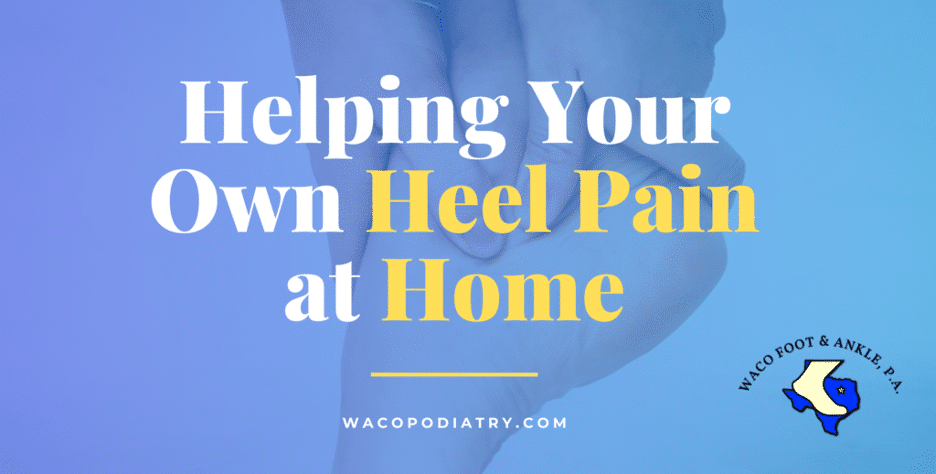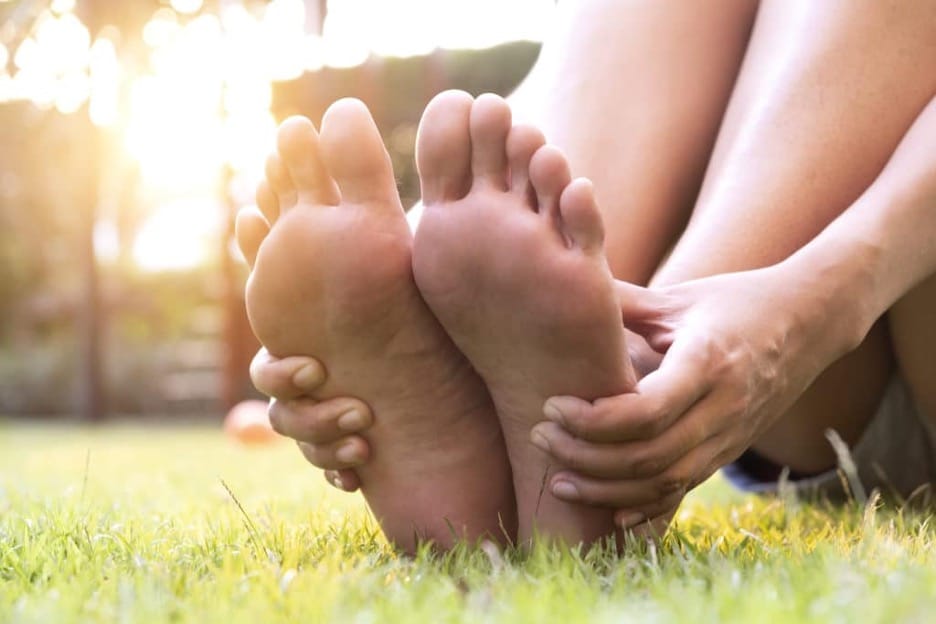Helping Your Own Heel Pain at Home
You may have found yourself staying home more often in the past few months than you once did. COVID is a likely factor for your situation, but other changes in life and career can also have this effect at any point in time.
What might be particularly unexpected, however, is if you find that:
- Heel pain you’ve usually experienced outside the home has followed you to a more home-centric lifestyle,
- Your heel pain has, in fact gotten worse recently, or
- You never had heel pain before, but now do!
If any of the these three situations applies to you—or you have simply been living with persistent heel pain for some time now—you should be seen by a professional. Something is at the source of this problem, and we can identify it and help you treat it effectively. Never hesitate to call us at (254) 776-6995 to schedule an appointment!
But in the meantime, there are things you may be able to do at home that can help lessen the intensity or duration of your heel pain flare-ups.
It’s important to note that we can’t guarantee all of these will be effective for your situation, however. Heel pain can be influenced by multiple different factors and conditions, which is why it’s so important to get an expert evaluation. However, knowing whether tips like these provide you any relief can be a big help in pinpointing those causes. So even if home treatments aren’t fully effective, they can still provide valuable clues about what will work.

Keep Your Shoes On
Yes, we mean indoors.
If you have previously spent your days at the office or worksite, it’s pretty likely that you spend a lot of time wearing shoes—shoes that were providing your feet with regular support and cushioning. Even better if those shoes contained custom orthotic inserts!
But now that you’re not spending as much time in those shoes, your heels might not be ready to handle the load all on their own. This could be contributing to your worsening pain.
Consider cleaning off your shoes and wearing them inside the house, for at least a few hours a day. See if that provides you with some additional comfort. If so, that’s a good indication that an abnormality in your foot structure may need to be addressed.
Of course, if your work shoes made you miserable in the first place, kindly disregard this tip.
Take Time to Stretch
Some stretching of the feet, heels, and calves can help condition strained tissues and relieve pain.
Although you can stretch anytime during the day, doing it first thing in the morning can be especially helpful, especially if you often feel a sharp jolt of pain every time you get out of bed. That’s a good sign that your plantar fascia may be aggravated by moving again after a long period of inactivity, and “warming it up” with some morning stretching can help lessen that pain.
Here is one stretch to try before you even get out of bed, and another you can do anytime during the day. For the first, you will need a towel, resistance band, or belt—anything that can provide a firm strap of workable length.
Morning Stretch
- While still in bed, sit up with one leg straight out in front of you.
- Place whichever form of strap you are using around the foot, up against the ball of the foot and toes. Grasp the ends of the strap with both hands.
- Gently pull back on both ends of the strap, flexing your upper foot back. Do not yank or jerk the strap, but make sure your arms are doing all the work.
- Hold for 30-45 seconds, then release.
- Repeat 2-3 times per foot.

Calf Stretch
Why the calves? Because they connect to your heels, and tight ones can exert excess force on that area.
- Stand in front of a wall, placing both hands flat upon it at about shoulder height.
- Step back with one foot, keeping the toes of both feet pointed straight.
- Shift forward, bending the front knee while holding the back leg straight. (Try to keep both heels flat against the floor, but it is OK to raise them if you need to.)
- Hold for 30-45 seconds, then repeat 2-3 times per leg.
If you seek out other stretches, remember to follow directions precisely and always stop immediately if you feel pain. We can also help you determine a good routine for your needs.
Roll It Out
This one is simple, feels good, and can even be fun!
When your heels start to hurt, simply take a tennis ball, bottle, or other firm, round object and roll it beneath your feet. If you want a deluxe treatment, freeze a water bottle (maybe take some of the water out of it first) and use that instead! Just don’t do it anywhere you wouldn’t want to get wet—just in case.
The Help You Need for Heel Pain
Heel pain that persists, no matter how mild or severe, is something that should be addressed. We’re always here to help you find the best solutions to keep you moving comfortably!
Call us at (254) 776-6995 to schedule an appointment, or fill out our online contact form if you prefer to reach us electronically.
